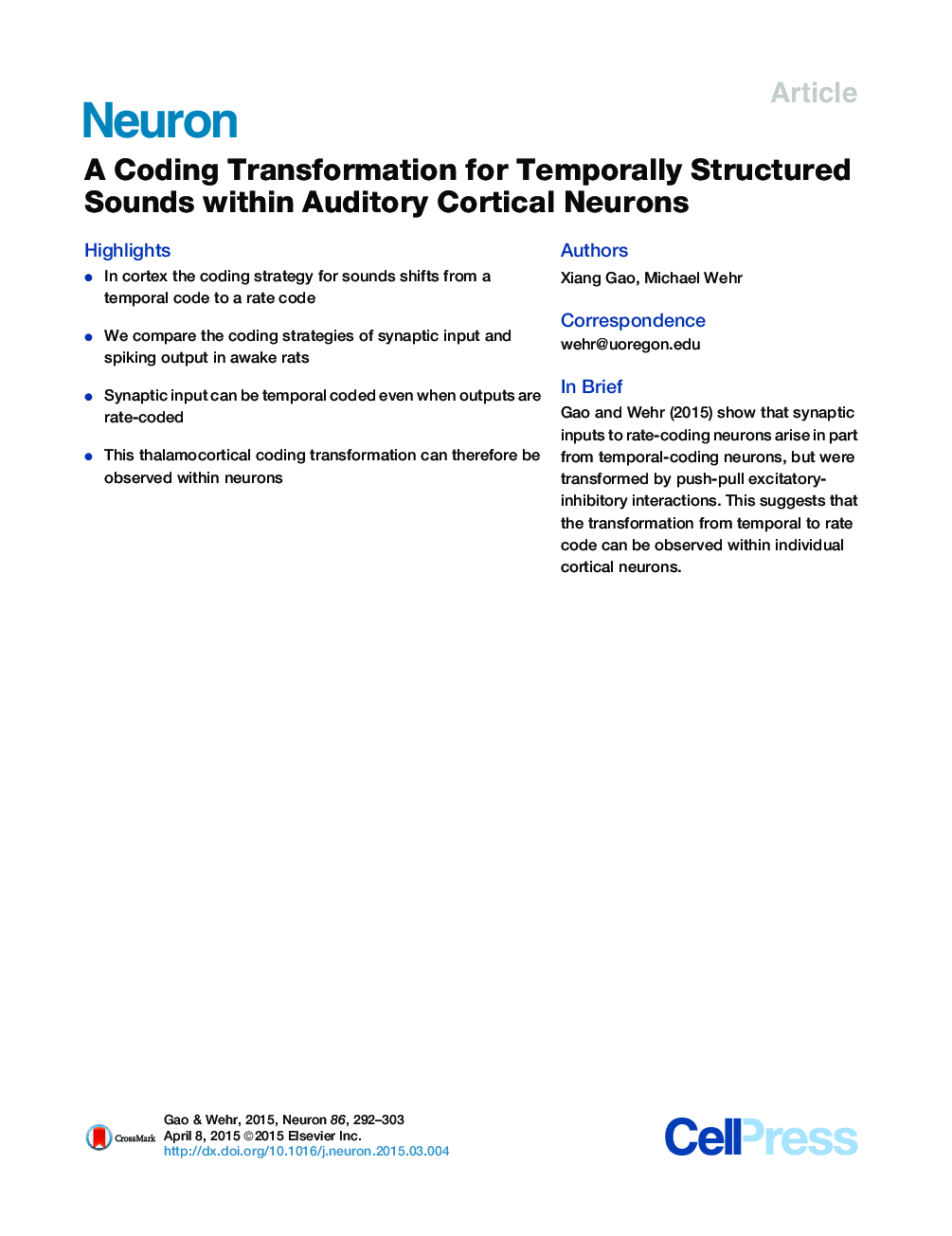| Article ID | Journal | Published Year | Pages | File Type |
|---|---|---|---|---|
| 4321013 | Neuron | 2015 | 12 Pages |
•In cortex the coding strategy for sounds shifts from a temporal code to a rate code•We compare the coding strategies of synaptic input and spiking output in awake rats•Synaptic input can be temporal coded even when outputs are rate-coded•This thalamocortical coding transformation can therefore be observed within neurons
SummaryAlthough the coding transformation between visual thalamus and cortex has been known for over 50 years, whether a similar transformation occurs between auditory thalamus and cortex has remained elusive. Such a transformation may occur for time-varying sounds, such as music or speech. Most subcortical neurons explicitly encode the temporal structure of sounds with the temporal structure of their activity, but many auditory cortical neurons instead use a rate code. The mechanisms for this transformation from temporal code to rate code have remained unknown. Here we report that the membrane potential of rat auditory cortical neurons can show stimulus synchronization to rates up to 500 Hz, even when the spiking output does not. Synaptic inputs to rate-coding neurons arose in part from temporal-coding neurons but were transformed by voltage-dependent properties and push-pull excitatory-inhibitory interactions. This suggests that the transformation from temporal to rate code can be observed within individual cortical neurons.
